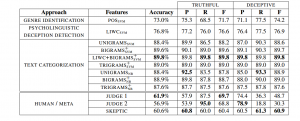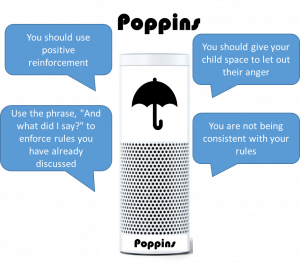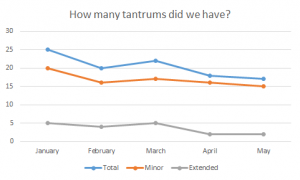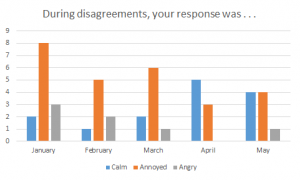Problem
Recent events in the U.S have highlighted the need for an effective system that is able to identify police officers who are at risk of serious misconduct in order to provide them with the proper training to mitigate potential misconduct. According to the Chicago Reporter, the officer in Chicago who shot and killed 17-year-old Laquan McDonald in October 2014 had 19 citizen complaints and two misconduct lawsuits against him, yet the system in place had not flagged him as at risk of misconduct. Many current systems do not use computer programming to identify potentially problematic officers, and instead rely on a threshold system that uses only a limited number of metrics. This threshold system often places an unnecessarily high number of officers in an at-risk category, failing to identify officers that are truly most at-risk of committing adverse actions.
According to FiveThirtyEight, the number of prior complaints against police officers is strongly correlated with future misconduct. Police departments can combine this data with other police officer attributes to build a predictive model which identifies officers with a high-risk of misconduct prior to that misconduct actually taking place.
Solution
A team of researchers with the University of Chicago’s Center for Data Science and Public Policy developed an early intervention system (EIS) predictive model that can foresee adverse interactions between officers and civilians. In addition to flagging risk, the model also provides suggestions for preventative measures based on the individual’s risk profile.
In order to develop the predictive model, the researchers analyzed a comprehensive data set of interactions between cops and the public gathered by Charlotte police officials for more than ten years. The data included information on officer attributes, officer activities, and internal affairs investigations provided by the police department, as well as publically-available data such as weather and quality-of-life survey information. They tested the data using historical information to see which pieces of data would have predicted officers committing misconduct.
They found that cops with many instances of adverse interactions in one year were the most likely to have them in the next year, so they use this, combined with other indicators, to predict potential issues in the police force. Some of the identified additional indicators include excessive tardiness, misuse of medical leave, or a low grade on an annual performance review.
Results and Potential Improvements
Since police departments are not yet actively using this EIS, the researchers do not know if the predictions will successfully enable interventions that will reduce the likelihood of adverse interactions. However, three studies of police agencies that have implemented similar early warning systems have shown that targeted interventions can reduce citizen complaints against officers as much as 66 percent over two to three years. For example, if EIS identifies officers that are at high risk of committing misconduct, the police department can implement interventions that address the causes of the risk, such as training for working with youth.
The model developed by University of Chicago researchers correctly flagged 15 – 20 percent more officers who were involved later in adverse incidents than the current system in Charlotte, while also reducing the number officers incorrectly flagged by 50 percent or more. By improving the ability to correctly identify at-risk officers and the causes behind adverse incidents, this model will enable police departments to save time and resources while also improving their effectiveness in keeping their jurisdictions safe.
While other early intervention systems exist, the strength of this model is that it uses multiple indicators, rather than a single indicator threshold. By using multiple indicators, police departments will better be able to identify the root causes of police officer misconduct, which will allow them to implement more effective interventions to prevent this misconduct.
The success of the EIS algorithm is dependent on the quality and relevance of the inputted data. The Center for Data Science and Public Policy can improve the EIS by finding new sources of data that come from outside a police department. An organization called OpenOversight in Chicago has attempted to democratize police accountability by providing a digital gallery that allows the public to identify the name and badge number of a police officer they would like to file a complaint about. From March 2011 – March 2015, 28 percent of police complaints in Chicago were immediately dropped due to no officer identification. These are complaints that likely would not show up in the EIS so crowdsourced data from an organization like OpenOversight could help to fill this gap. Additionally, data crowdsourced from the public could serve as a way to check potential biases currently impacting a police department’s data.
By: Ex Machina Learners
Sources:
“About OpenOversight.” OpenOversight – a Lucy Parsons Labs Project. N.p., n.d. Web. 21 Apr. 2017.
Arthur, Rob. “We Now Have Algorithms To Predict Police Misconduct.” FiveThirtyEight. FiveThirtyEight, 10 Mar. 2016. Web. 21 Apr. 2017.
Gregory, Ted. “U. of C. Researchers Use Data to Predict Police Misconduct.”Chicagotribune.com. N.p., 18 Aug. 2016. Web. 21 Apr. 2017.
Joseph, George. “Crowdsourcing Police Accountability.” CityLab. N.p., 25 Oct. 2016. Web. 21 Apr. 2017.
Mitchum, Rob, Jacqueline Genova, and Lin Taylor. “Police Project Update: Expanding and Implementing the Early Intervention System.” Data Science for Social Good. N.p., 12 Jan. 2017. Web. 21 Apr. 2017
Newman, Jonah. “Program That Flags Chicago Cops at Risk of Misconduct Misses Most Officers.” Chicago Reporter. N.p., 04 Mar. 2016. Web. 21 Apr. 2017.
Smith, Megan. “Launching the Police Data Initiative.” National Archives and Records Administration. National Archives and Records Administration, 18 May 2015. Web. 21 Apr. 2017.












